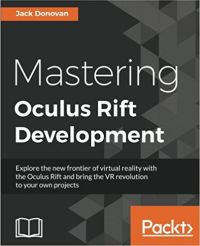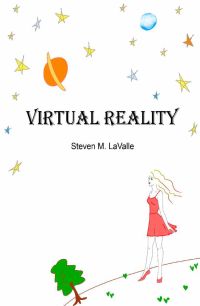Difference between revisions of "CSE190S2018"
(→Format) |
(→Homework Assignments) |
||
| (10 intermediate revisions by one user not shown) | |||
| Line 1: | Line 1: | ||
=CSE 190: Virtual Reality Technology= | =CSE 190: Virtual Reality Technology= | ||
| − | Course Description | + | ==Course Description== |
Virtual reality (VR) has been capturing people’s imagination for decades, but it has been only recently that this technology became available for consumers. This course aims to explain how VR technology works, and the students are going to do programming projects to better understand potential and limitations of today’s VR hardware and devices. | Virtual reality (VR) has been capturing people’s imagination for decades, but it has been only recently that this technology became available for consumers. This course aims to explain how VR technology works, and the students are going to do programming projects to better understand potential and limitations of today’s VR hardware and devices. | ||
| Line 30: | Line 30: | ||
* Instructor: Dr. Jürgen Schulze | * Instructor: Dr. Jürgen Schulze | ||
| − | * Instructor's office hour: | + | * Instructor's office hour: Tuesdays 3:30-4:30pm, Atkinson Hall, Room 2125 |
* Number of Units: 4 | * Number of Units: 4 | ||
* Section ID: 938650 | * Section ID: 938650 | ||
| Line 38: | Line 38: | ||
* 1 in-class written exam | * 1 in-class written exam | ||
* 1 VR app/video presentation in-class | * 1 VR app/video presentation in-class | ||
| − | * | + | * [https://piazza.com/class/jfboj6v3xm13n9 Piazza page] |
* Designated computer lab: CSE B210 (VR Lab) | * Designated computer lab: CSE B210 (VR Lab) | ||
* Tutors: Timothy Wang, Russell Xie, Robin Xu; see Piazza for office hours | * Tutors: Timothy Wang, Russell Xie, Robin Xu; see Piazza for office hours | ||
| Line 67: | Line 67: | ||
You will find your homework and other scores on TritonEd. Please verify a few days after after every due date that your score has been recorded correctly and inform your grader or instructor if you find an error. | You will find your homework and other scores on TritonEd. Please verify a few days after after every due date that your score has been recorded correctly and inform your grader or instructor if you find an error. | ||
| − | |||
The final grade depends on a weighted average of all the scores. The following grading key will be used: | The final grade depends on a weighted average of all the scores. The following grading key will be used: | ||
| Line 100: | Line 99: | ||
==Homework Assignments== | ==Homework Assignments== | ||
| − | + | * [[Project1S18 | Homework Assignment #1: Where's Waldo 3D]], due Friday, April 20th at 2pm | |
| − | * [[Project1S18 | Homework Assignment #1: | + | * [[Project2S18 | Homework Assignment #2: Levels of Immersion]], due Friday, May 4th at 2pm |
| − | * [[Project2S18 | Homework Assignment #2: Levels of Immersion]], due Friday, May | + | * [[Project3S18 | Homework Assignment #3: CAVE Simulator]], due Friday, May 18th at 2pm |
| − | * [[Project3S18 | Homework Assignment #3: CAVE Simulator]], due Friday, May | + | * [[Project4S18 | Final Project: Social VR]], due June 12th at 3:00pm |
| − | * [[Project4S18 | Final Project]], due June | + | |
| − | + | ||
| − | + | Projects 1 and 4 should be done in teams of two. Projects 2 and 3 are solo projects. | |
All projects must be demonstrated to the course staff on or before the due date. There will be a dedicated grading session on due dates at 2pm in CSE B210. | All projects must be demonstrated to the course staff on or before the due date. There will be a dedicated grading session on due dates at 2pm in CSE B210. | ||
| Line 122: | Line 119: | ||
| [https://www.amazon.com/VR-Book-Human-Centered-Virtual-Reality/dp/1970001127 The VR Book] by Jason Jerald, 550 pages, Morgan & Claypool Publishers, October 16, 2015, ISBN-10: 1970001127, ISBN-13: 978-1970001129 | | [https://www.amazon.com/VR-Book-Human-Centered-Virtual-Reality/dp/1970001127 The VR Book] by Jason Jerald, 550 pages, Morgan & Claypool Publishers, October 16, 2015, ISBN-10: 1970001127, ISBN-13: 978-1970001129 | ||
|- | |- | ||
| − | | [[Image: | + | | [[Image:mastering-200p.jpg]] |
| − | | [https://www.amazon.com/Oculus- | + | | [https://www.amazon.com/Mastering-Oculus-Rift-Development-Donovan/dp/1786461153/ref=sr_1_5 Mastering Oculus Rift Development] by Jack Donovan, 306 pages, Packt Publishing, February 6, 2017, ISBN-13: 978-1786461155, ISBN-10: 1786461153 |
|- | |- | ||
| [[Image:vr-200p.jpg]] | | [[Image:vr-200p.jpg]] | ||
Latest revision as of 11:22, 26 May 2018
Contents |
CSE 190: Virtual Reality Technology
Course Description
Virtual reality (VR) has been capturing people’s imagination for decades, but it has been only recently that this technology became available for consumers. This course aims to explain how VR technology works, and the students are going to do programming projects to better understand potential and limitations of today’s VR hardware and devices.
Course Schedule
Click here for the course schedule.
It lists lecture dates, homework due dates, and recommended reading.
Topics
In this course the following topics are going to be covered, plus possibly a few more:
- An overview of the state-of-the-art VR technologies and research trends will be given.
- The fundamental physics of 3D displays will be covered, including the major 3D depth cues.
- The most common display types such as LCDs and OLEDs will be introduced, in terms of display materials, device structures, working principles and research trends.
- We will look at various ways to create stereographic 3D images.
- Several quasi-true 3D displays, including holography, volumetric 3D displays and light field displays will be introduced.
- Immersive VR systems will be discussed, including HMD-based systems. This part of the course will include a discussion of smart phone based HMDs as well as high end computer-driven HMDs.
- Challenges with today’s HMD-based VR will be discussed and software driver components will be explained and implemented in C++ with OpenGL.
Prerequisites
- CSE167 (Introduction to Computer Graphics) or equivalent
Format
- Instructor: Dr. Jürgen Schulze
- Instructor's office hour: Tuesdays 3:30-4:30pm, Atkinson Hall, Room 2125
- Number of Units: 4
- Section ID: 938650
- Lectures: Tuesday and Thursday, 2:00pm-3:20pm at EBU 3b, room B210 (a.k.a. VR lab).
- Homework Discussion: Mondays 4:00-4:50pm in EBU 3b, room B210
- Homework: 4 programming assignments
- 1 in-class written exam
- 1 VR app/video presentation in-class
- Piazza page
- Designated computer lab: CSE B210 (VR Lab)
- Tutors: Timothy Wang, Russell Xie, Robin Xu; see Piazza for office hours
Grading
| Project 1 | 15% |
| Project 2 | 15% |
| Project 3 | 15% |
| Final Project | 25% |
| Midterm Exam | 25% |
| VR Content Presentation | 5% |
You will find your homework and other scores on TritonEd. Please verify a few days after after every due date that your score has been recorded correctly and inform your grader or instructor if you find an error.
The final grade depends on a weighted average of all the scores. The following grading key will be used:
| Final Score | Letter Grade |
|---|---|
| 100+ | A+ |
| 95+ | A |
| 90+ | A- |
| 85+ | B+ |
| 80+ | B |
| 75+ | B- |
| 70+ | C+ |
| 65+ | C |
| 60+ | C- |
For undergraduate students with the P/NP option: A pass (P) grade will be given for an average score of 60 or higher.
For graduate students with the S/U option: A satisfactory (S) grade will be given for an average score of 75 or higher.
Homework Assignments
- Homework Assignment #1: Where's Waldo 3D, due Friday, April 20th at 2pm
- Homework Assignment #2: Levels of Immersion, due Friday, May 4th at 2pm
- Homework Assignment #3: CAVE Simulator, due Friday, May 18th at 2pm
- Final Project: Social VR, due June 12th at 3:00pm
Projects 1 and 4 should be done in teams of two. Projects 2 and 3 are solo projects.
All projects must be demonstrated to the course staff on or before the due date. There will be a dedicated grading session on due dates at 2pm in CSE B210.
Late submissions will NOT be accepted.
Optional Textbooks
You won't need to buy a textbook for this course because the lecture slides will be made available to you. However, if you want more background information, we recommend the following books:

|
The VR Book by Jason Jerald, 550 pages, Morgan & Claypool Publishers, October 16, 2015, ISBN-10: 1970001127, ISBN-13: 978-1970001129 |

|
Mastering Oculus Rift Development by Jack Donovan, 306 pages, Packt Publishing, February 6, 2017, ISBN-13: 978-1786461155, ISBN-10: 1786461153 |

|
Virtual Reality by Steven M. LaValle. To be published by Cambridge University Press. Download PDF |
Students with Disabilities
If you have a documented disability, please bring your documentation to me as soon as possible so that I can make suitable accommodations for you. If you believe that you have a disability and desire accommodation, please register with the Office for Students with Disabilities.